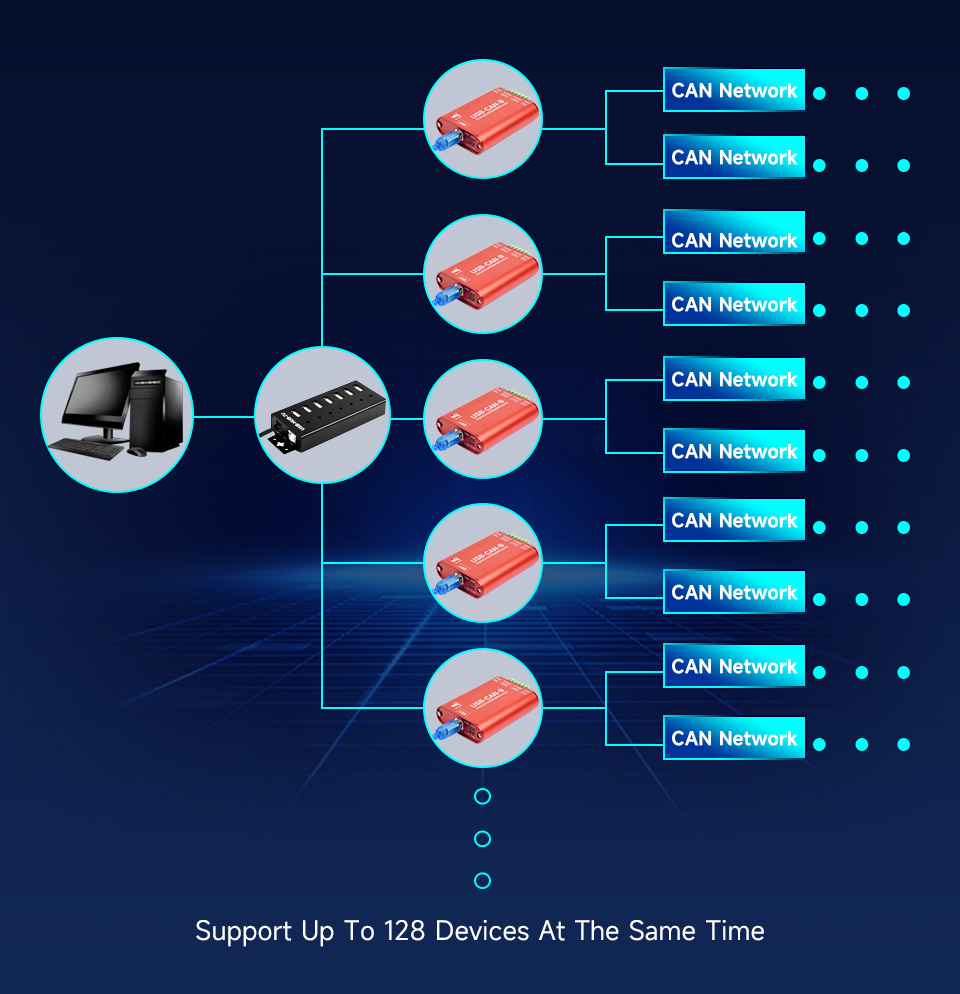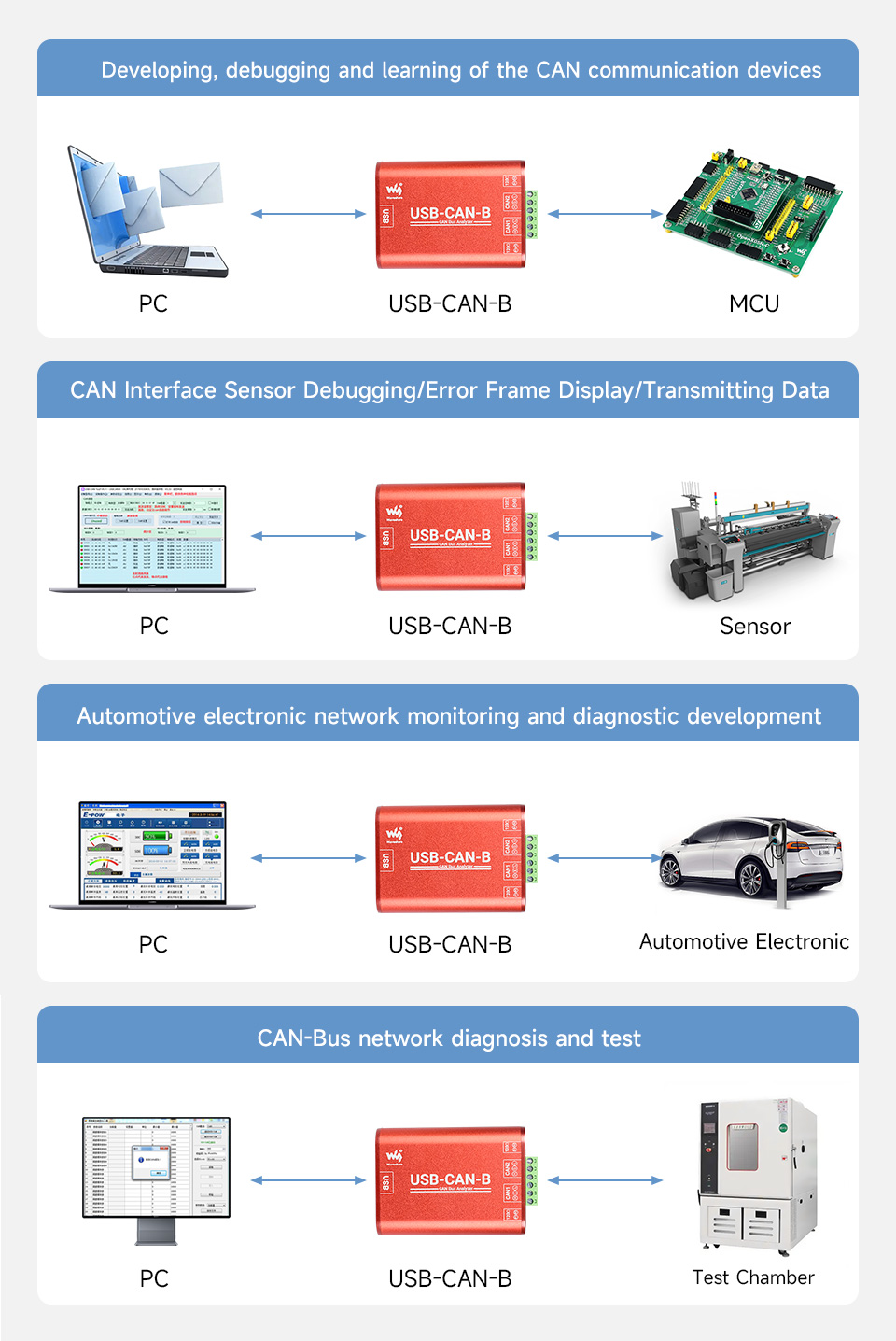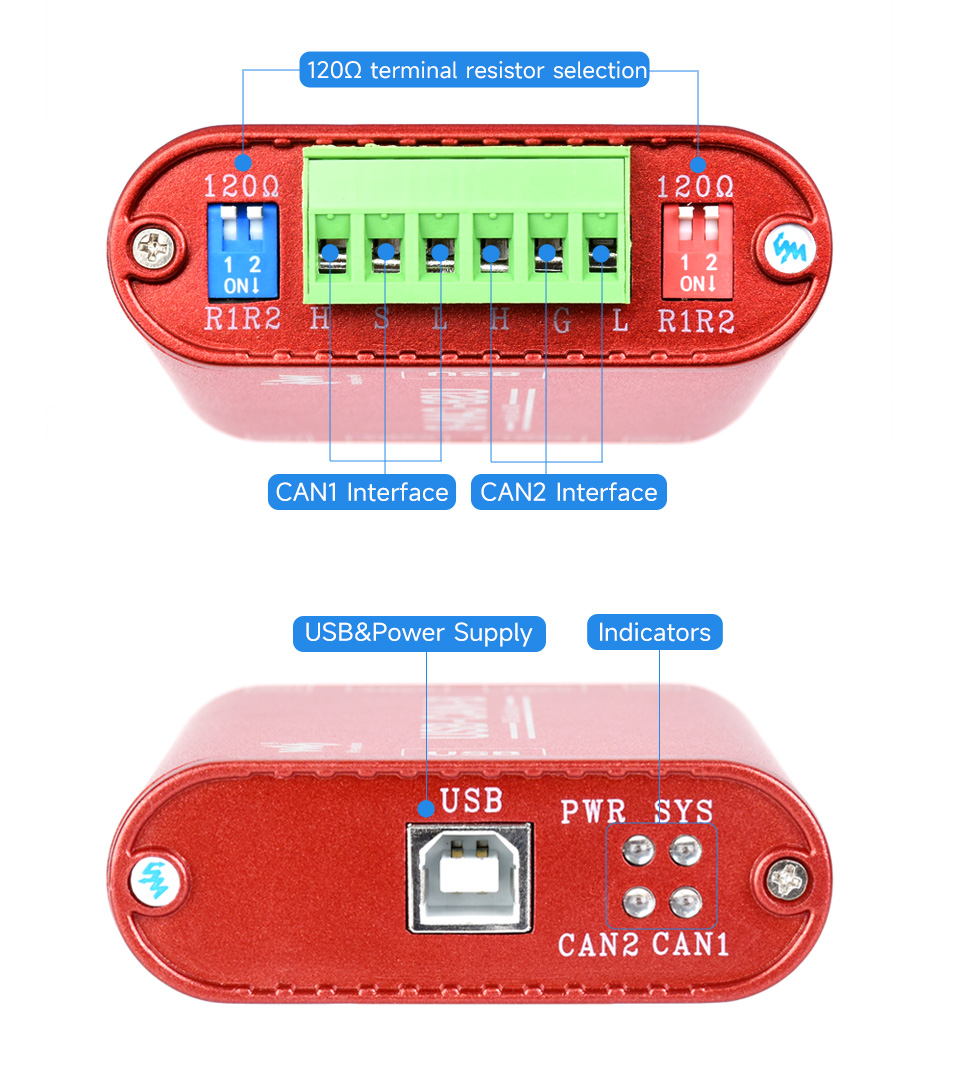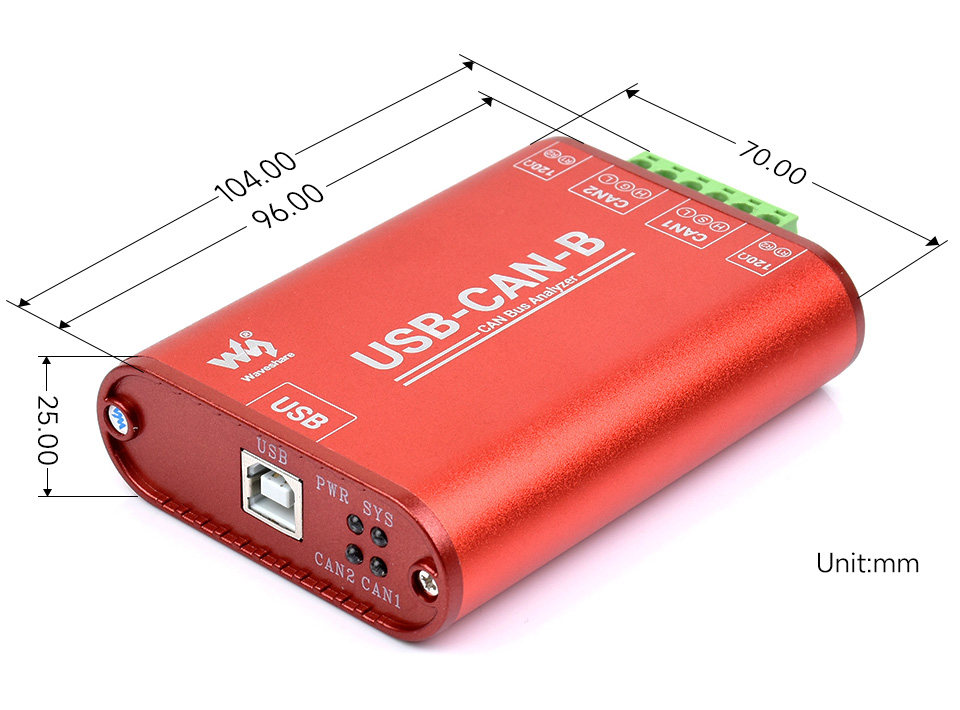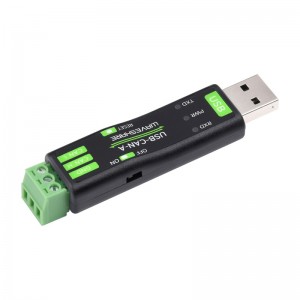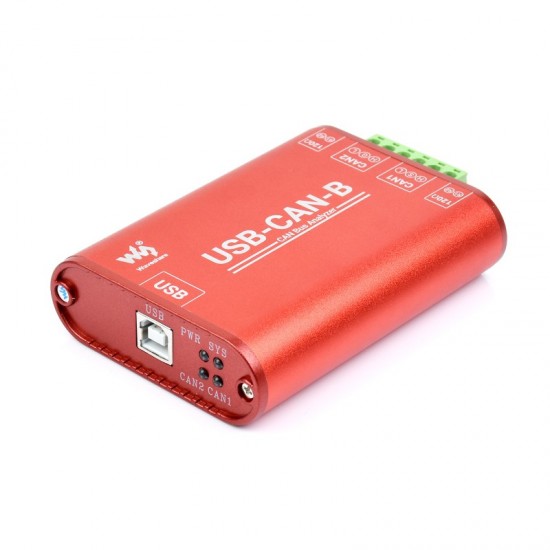
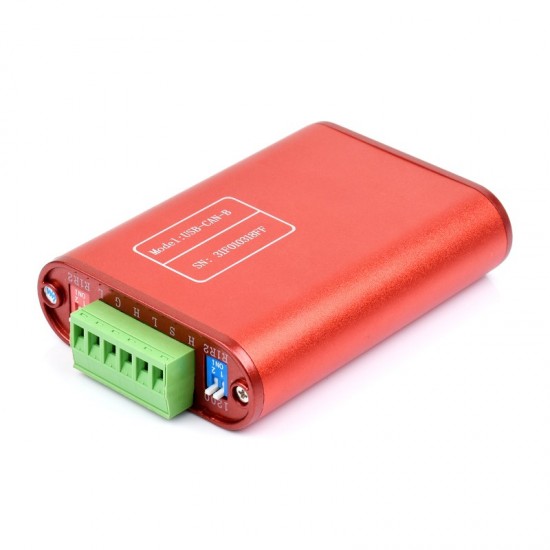
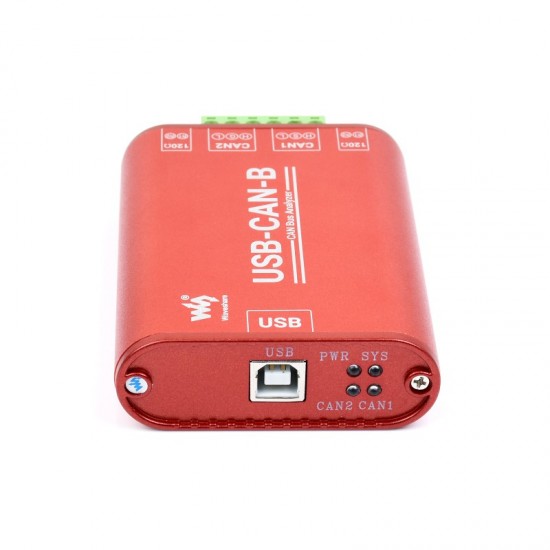

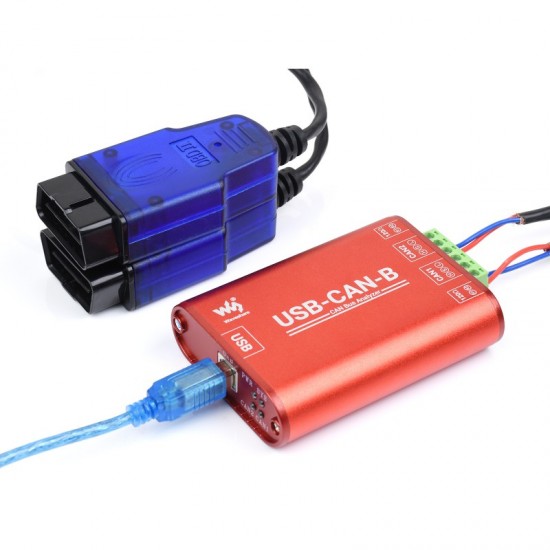





B2B GST Credit Available
- Stock: 5 in Stock
- SKU: 22773
- Delivery Time
- Bulk & B2B RFQ
USB-CAN-B is an industrial high-performance USB to CAN adapter, CAN-bus communication interface card and CAN protocol data analyzer. Integrating dual independent channels with electrical isolation and multiple protection circuits. Supports Windows and Linux systems, comes with drivers, CANTools related software, secondary development examples and tutorials. It can be connected to the PC or industrial control host via USB port to realize transceiver control, data analysis, collection and monitoring of CAN bus network. Compact in size and easy to use, which can be used for learning and debugging of CAN bus, and secondary developmentand integration into various industrial, power communication and intelligent control applications that require CAN bus communication.
Specifications
| PRODUCT TYPE | Industrial grade: USB to CAN interface converter/CAN-bus communication interface card/CAN protocol data analyzer | |
|---|---|---|
| USB | Operating voltage | 5V (directly powered by USB port without external power supply) |
| Connector | USB-B | |
| Protection | Power and signal fully isolation, 2500V DC isolation, ±8KV electrostatic discharge | |
| CAN INTERFACE | CAN channel | Dual-channel: CAN1 and CAN2 (independent and isolated) |
| Connector | CAN bus screw terminal | |
| Protection | Built-in GDT Ceramic discharge tube, can effectively release surge current Built-in EPCOS Common mode Choke, can improve anti-interference ability Built-in power and signal isolation module, 2500V DC isolation, ±8KV electrostatic discharge | |
| Terminal resistor | Each CAN channel has two built-in 120Ω terminal resistors, which can be enabled by switch | |
| Baud Rate | 10Kbps~1Mbps | |
| Protocol Support | CAN2.0A, CAN2.0B, CANOpen, SAE J1939, DeviceNet, iCAN, ISO 15765 protocol | |
| Hardware Support | Single-wire CAN, High-speed CAN, Low-speed/Fault-tolerant CAN | |
| Transfer speed | The receiving and sending of each CAN channel can reach: 8500 frames/s | |
| Transmit buffer | 2000 frames receiving buffer and 1000 frames sending buffer per channel (automatically retransmit when transmission fails) | |
| INDICATORS | PWR | Red power indicator, light up when there is USB connection and voltage is detected |
| TXD | Green TX indicator, light up when the USB port sends data | |
| RXD | Blue RX indicator, light up when the device ports send data back | |
| CASE MATERIAL | Aluminum alloy case + 3D flame-retardant insulating sheets on both sides | |
| DIMENSIONS | 104 x 70 x 25 mm | |
| OPERATING TEMPERATURE | -40~85℃ | |
| SYSTEM SUPPORT | Windows | Windows XP/7/8/10/11 (32/64 bits) |
| Linux | Raspberry Pi OS, Ubuntu (Jetson Nano), VMware virtual PC and so on. | |
Resources
Supports Protocol Conversion
Adopt High-Speed USB2.0 Interface, Compatible With USB 1.1 And USB 3.0
Dual CAN Bus Interfaces Support Two-Way Transmission, Can Work Independently Without Affecting Each Other
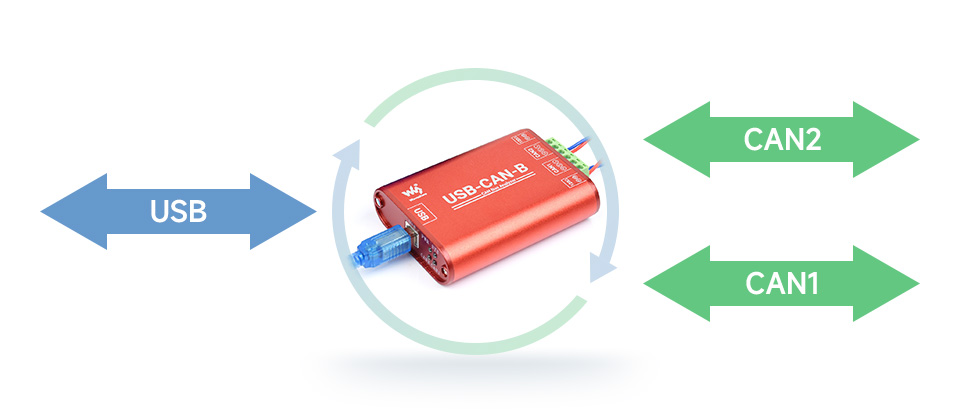
CAN Baud Rate Is Configurable In The Range Of 10Kbps-1Mbps
Supports Baud Rate Calculation, Auto-Detection, And Setting Via The Configuration Tool
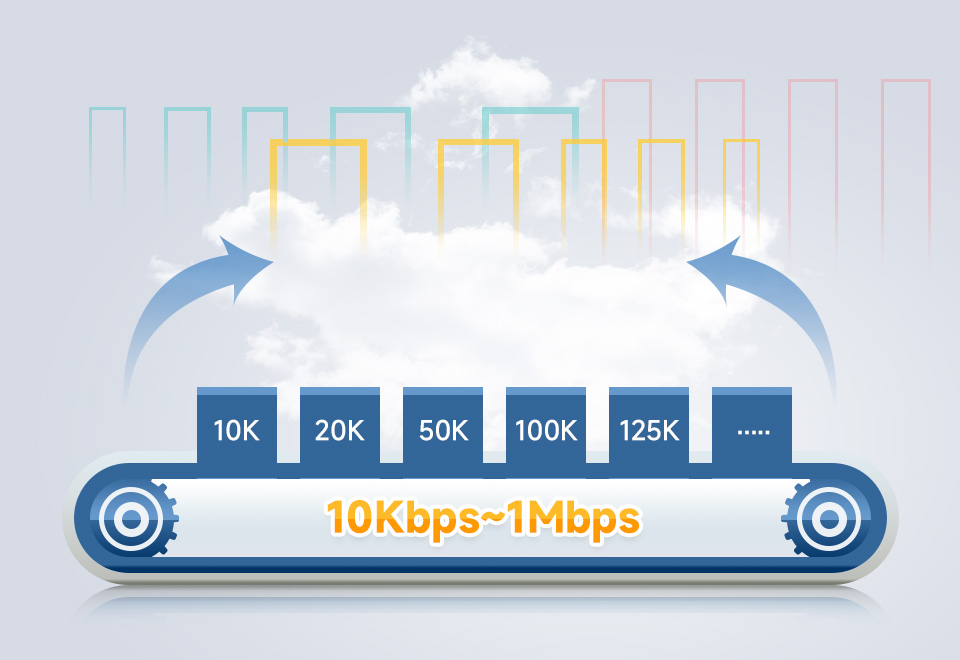
Multiple CAN Protocols
Support CAN 2.0A, CAN 2.0B, CANOpen, SAE1939, DeviceNet, ICAN, ISO 15765 Protocols
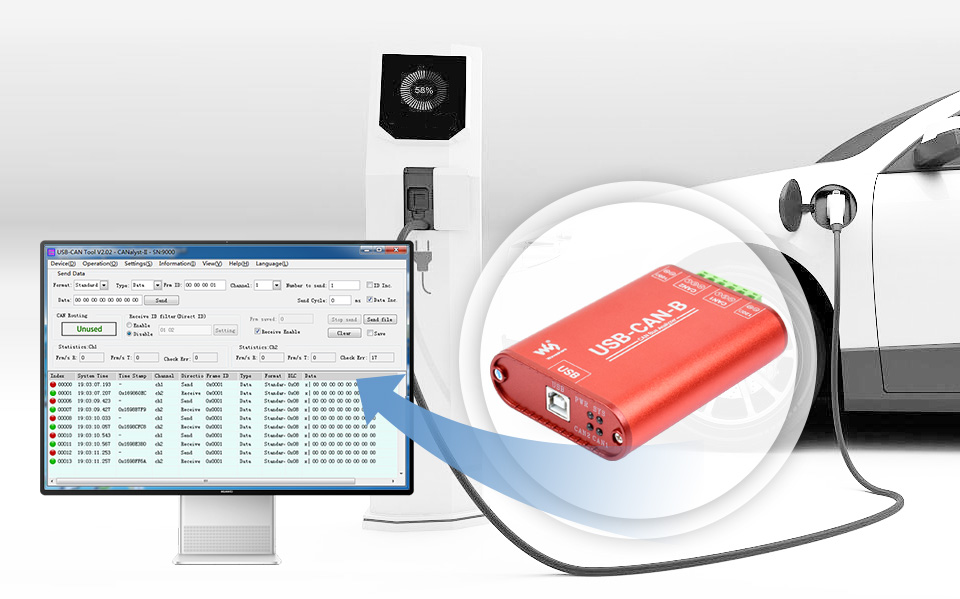
CAN2 Can Be Set As Hig-Speed CAN Or Low-Speed/Fault-Tolerant CAN By The Software
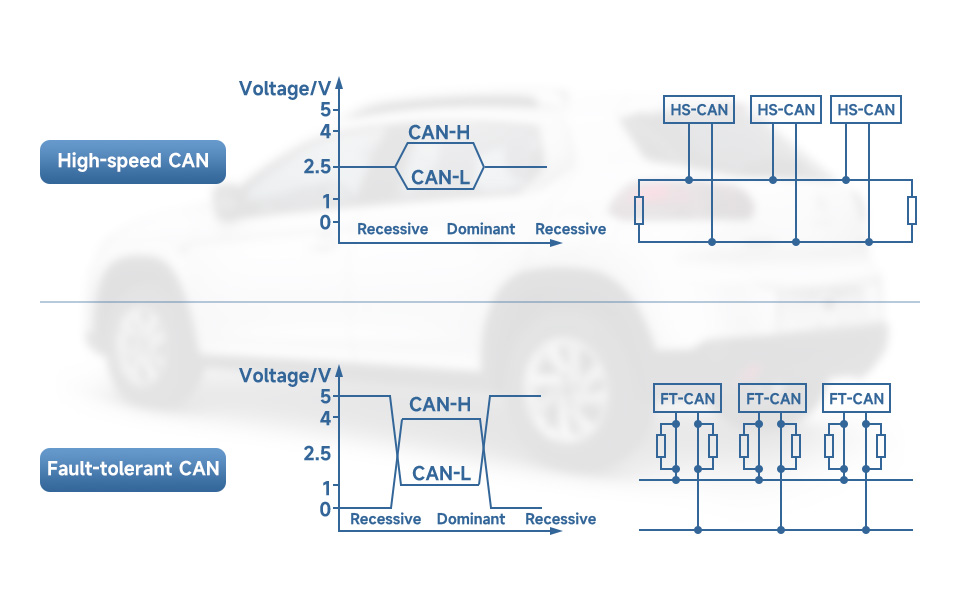
Provide examples for secondary development projects on various mainstream development platforms: C++Builder, C#, VC, VB, VB.NET, Delphi, LabVIEW, LabWindows/CVI, Q, Matlab, Python/Python-can, Qt samples under Linux
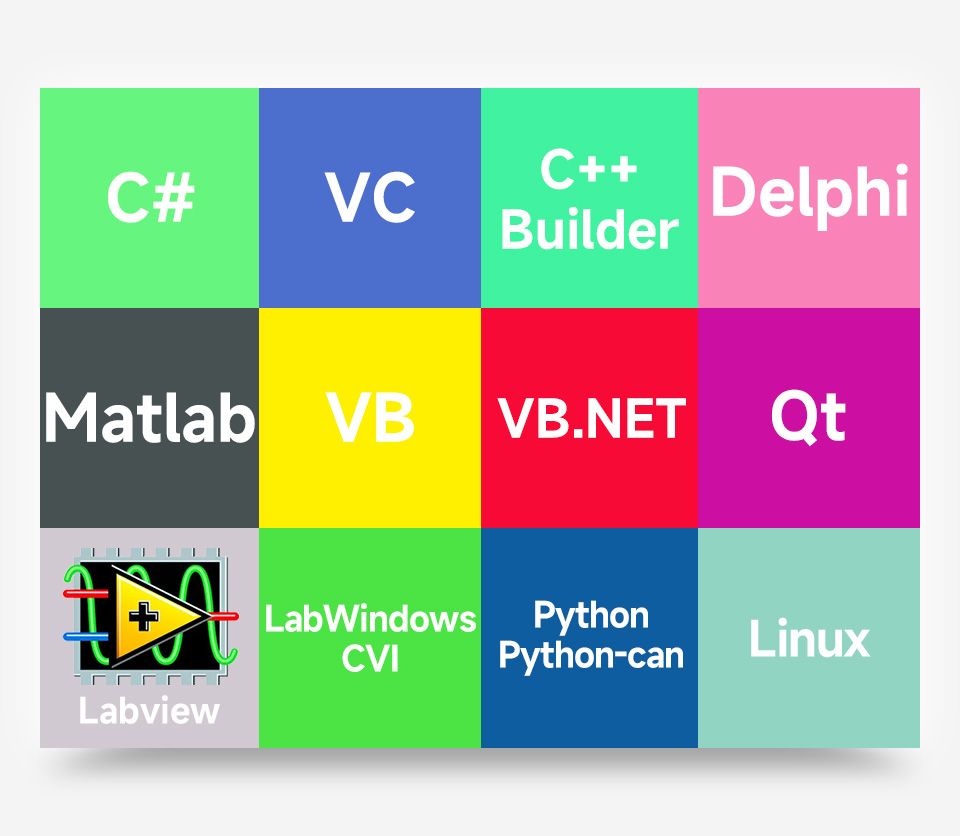
Support Windows XP/7/8/10/11 and Linux systems such as Raspberry Pi OS and Ubuntu under Jetson Nano, provide corresponding driver libraries, development examples and usage tutorials, convenient for entry and secondary development
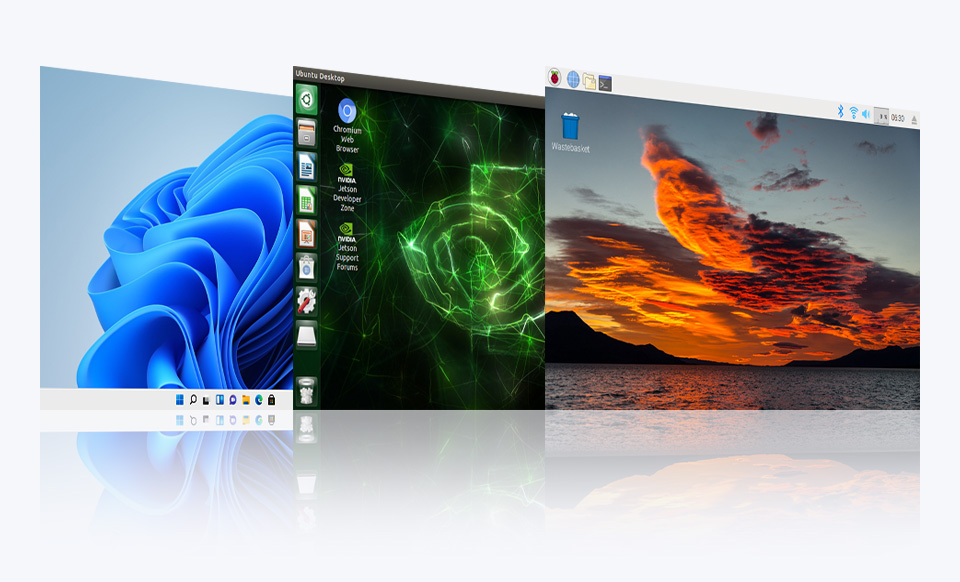
Adopt Microchip Original Controller And 32-Bit MIPS M4K® Core, Up To 80MHz Frequency,
High Performance, Stable And Reliable
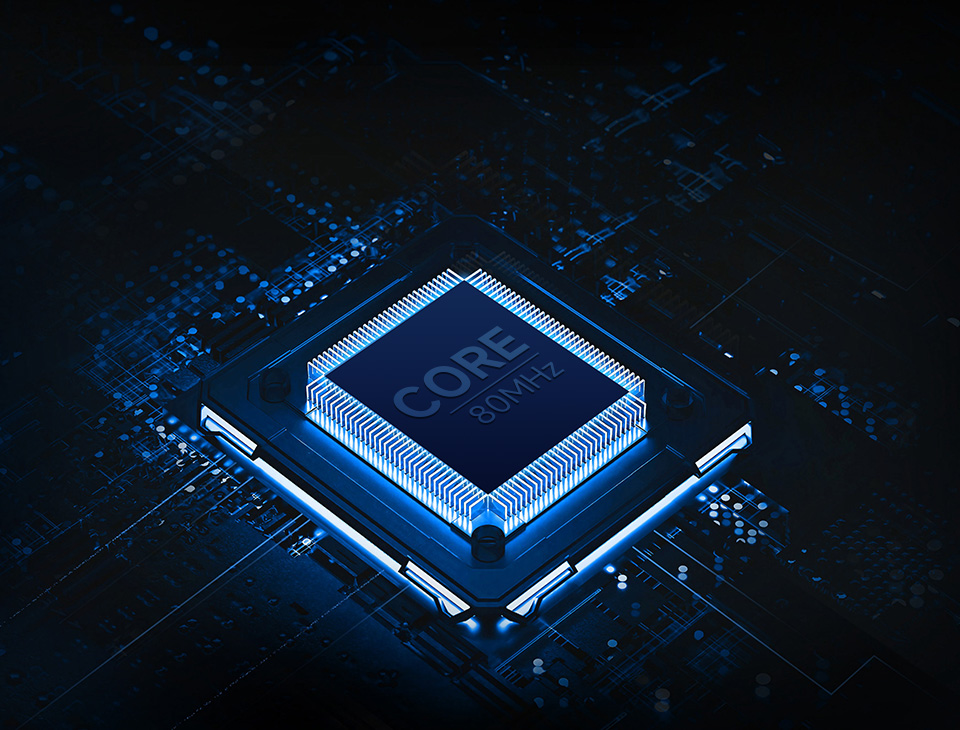
ADI high-speed magnetic coupling isolation, 2500 VDC Electrical Isolation, USB, CAN1 and CAN2 three-terminal full isolation, higher communication security and stability
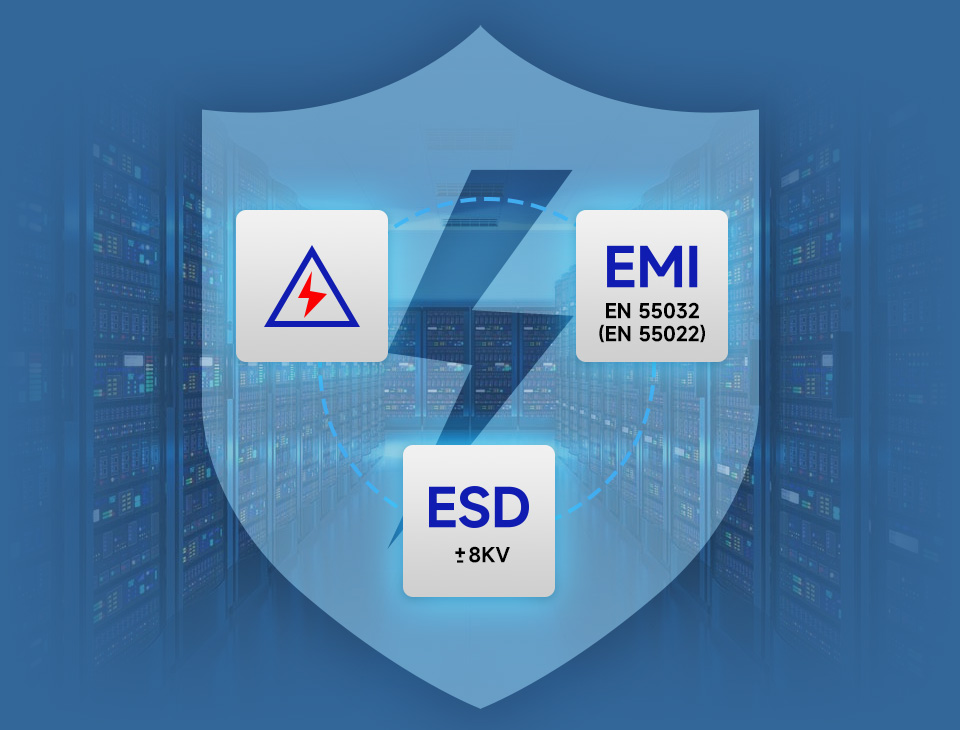
Supports one PC to run multiple CAN analyzers at the same time without interfering with each other, up to 128 devices after testing. It is suitable for monitoring multiple CAN networks at the same time with one monitoring device, or for data comparison and verification and so on.
